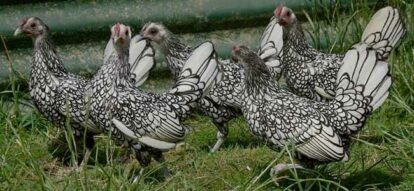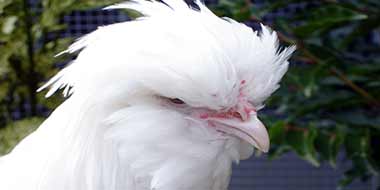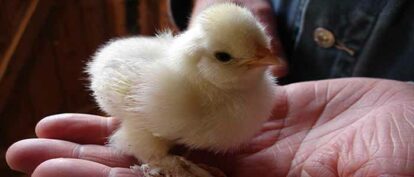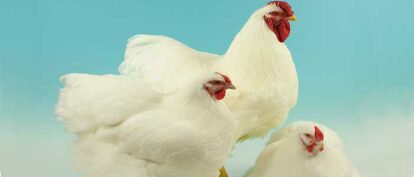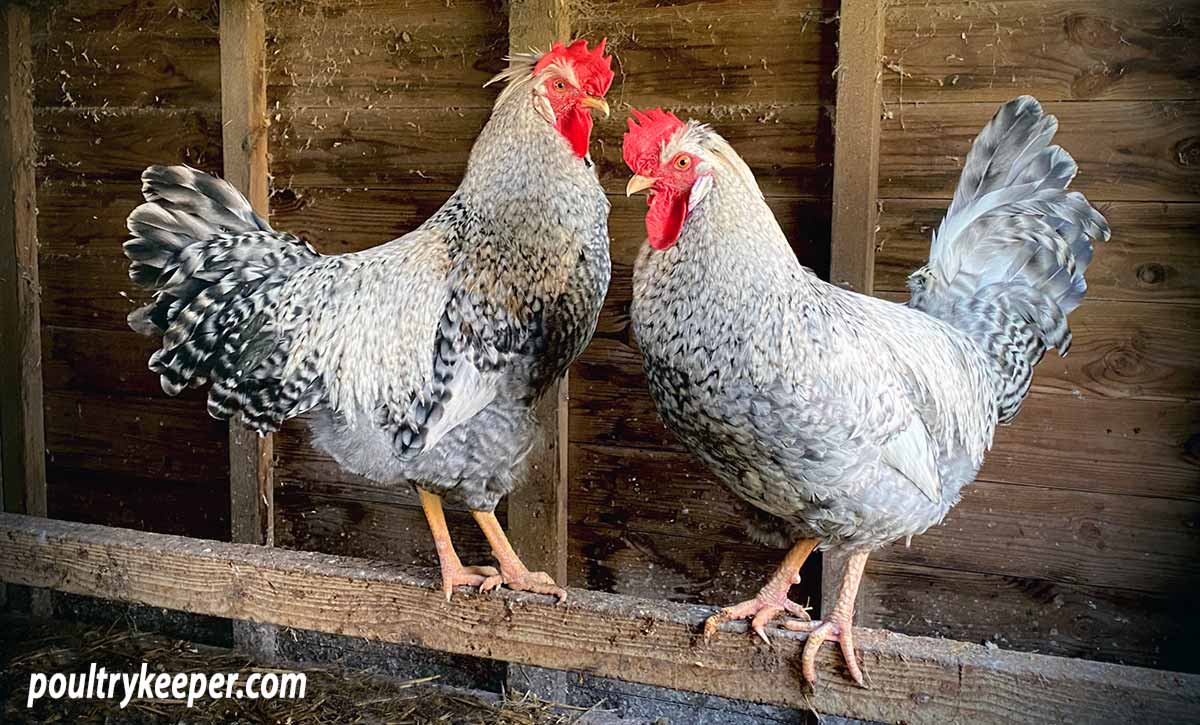
Jeremy Hobson is the author of numerous poultry books and magazine articles about poultry keeping. Although he may be no spring chicken himself, (Jeremy’s words not mine…!) here, he suggests some ways of preparing for the breeding season by getting healthy, early, chicks from your breeding stock.
At one period, and I am mainly talking here of Victorian times – that great age of poultry keeping – poultry breeders did all within their power to ensure that the new season’s chicks were hatched as early as possible in the new year.
As William Cook, the pioneer of utility poultry keeping in the UK and also the originator of the Orpington breed wrote in his famous book, Poultry Breeder and Feeder; “February and March hatched chickens generally do particularly well, and these birds can be relied upon to produce an abundance of eggs during the following winter, as they lay early, then moult, and come on to lay again when eggs are fetching the best prices.”
Nowadays, the easy availability of a balanced diet, the development of breeds, and various other factors make the need to produce winter eggs in this way not so relevant. Nonetheless, the 21st-century poultry keeper will still benefit by rearing chicks early in the year as is practicable.

Lighting as an aid to early breeding
One of the ways that the commercial egg producer obtains the maximum amount of eggs throughout the breeding season is by providing extra ‘daylight’ to his birds during the winter months.
This is normally achieved by electric lighting, which stimulates hens into carrying on laying at a time when their egg production would naturally fall or cease altogether. This fact can also be used to great advantage when bringing breeding stock into lay to achieve early spring-hatched chicks.
There are products on the market. Alternatively, try rigging up some simple form of low-energy lighting activated by a timer either in the circuit or at the plug point but remember that, although lighting need not be elaborate, if it is thought necessary or desirable to supply power via an extension from your own home, installation should only be carried out by a professional electrician – rainwater and electricity do not mix!

Not only is there the obvious danger aspect to consider but also the fact that, since 2005, although DIY electrical work is still allowed, it must comply with the requirements of certain building regulations.
Interestingly, experiments done in France with breeding pheasants have found that the fertility of male birds will be increased by the use of artificial lighting – in fact, they were found to require a longer period to become fertile than did the hens to commence laying – I have no reason to suppose that it should be any different with domestic poultry.
Health and selection
It should go without saying that all birds must be in optimum health – they may, at first glance, look healthy enough, but if there is insufficient protein, minerals, vitamins and calcium in their diet, they will never do really well.
Correct nutrition is vital for all poultry, especially at the beginning of the year when a rearing programme is being contemplated.
Without it, no bird will mate or lay to its best advantage. There are many breeder rations on the market, and these should be fed from mid-winter onwards. They provide all the essentials required for higher fertility and hatchability.
Every bird should be bright-eyed with a clean back-end and no mucus coming from the nostrils or beak. The combs and wattles should, where appropriate, be waxy in texture, but remember that, whereas most combs ought to be red, there are exceptions – a Silkie chicken, for example, has a purple-coloured comb.
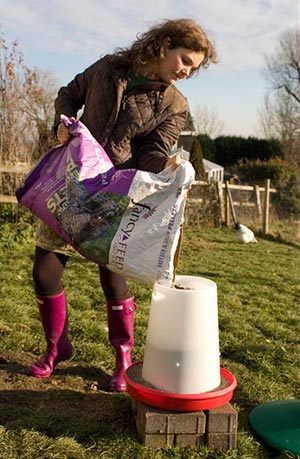
Check that the leg joints are normal and not swollen; that there is a reasonable amount of flesh around the breast-bone or keel and that the feet are not deformed.
Eyes must be bright and free from any pale cast impeding vision; the beak should be straight, with both the upper and lower mandibles able to connect.
Finally, examine the overall condition of the bird: it should be free of parasites and lice and the feathers tight and glossy – a condition best noticed in birds that have been given total free-range and the chance to become weather-hardened.
All breeding stock must be mature and conform to breed standards. If the pedigree and background of any birds is doubtful many of their faults could be transferred to the offspring. Therefore, it is essential that all the components of the breeding pen (and not just the cock bird as is often cited) have come from quality stock themselves if there is to be any hope of producing good prodigy.
Cocks and flock-mating
Cock birds can obviously be run with their hens all the year round, but some professional breeders prefer to house them separately until the mating season, believing that this keeps the males keen and eager to do their job.
If you choose to keep your breeding cocks separate, you should introduce them to the hens at least a month before fertile eggs are required for hatching – eggs may be fertilized within 7-14 days of mating, but it is as well to allow a little more time than this in order to make sure. Incidentally, if a male of another bloodline is subsequently introduced, it is advisable to allow the same sort of time scale after the changeover before beginning to save any eggs for hatching.
I have mentioned cocks in the plural in the above paragraph, but it is more usual for a single male to be penned with a small harem of females.
Just what the exact ratio should be, depends to a great extent on the particular breed: some give the best results by being penned as trio or quartets whilst others fare better when mated with 6-8 hens.
If you are in any doubt, try talking to experienced breeders, many of whom advertise in the poultry for sale pages or, better still, seek the advice of someone at your local poultry or smallholding club.
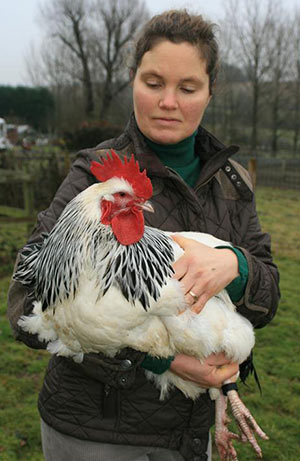
Generally, attempting to run more than one cock with a pen of hens is not a good idea, as more time will be spent by the cocks in sparring up to one another and fighting than it will in mating with the females, which is, after all, the whole point of the exercise!
In some situations (mainly, it must be admitted in a commercial free-range set up specialising in larger quantities of table or egg-laying birds rather than is likely to be the case on the smallholding), flock mating – a system whereby several males are run with selected groups of females at the rate of perhaps as many as one cock to 10-15 hens – can be quite successful.
Exactly how successful depends on the breed chosen: some, such as the Australorp, Barnevelder, Orpington, Rhode Island Red and Sussex, are better suited to flock mating than are the lighter types or game-based breeds.
The secret of flock mating is not only to choose the breed carefully but, perhaps more importantly, also to ensure that you have sufficient space to allow the cock birds to get out of each other’s way. Males will run from one end of the pen to the other if they see and hear another cock mating with a female, so space and perhaps the addition of a few screens that will block the view at bird’s-eye level – and behind which both sexes can hide – will help in overcoming this particular problem.
Cross-breeds and sex-linking
If you are merely looking to produce utility birds that will supply either meat, eggs or both, do you really need to bother with pure breeds?
A pure-bred bird undoubtedly has certain advantages, but so too does a cross-breed or hybrid.
Indeed, many poultry keepers claim that the latter has several serious advantages over the former as they are generally less inter-bred and therefore more vigorous and healthy.
Some crosses have become so well-known throughout the years that they are almost accepted as being a true breed. A Light Sussex/Rhode Island Red cross, for example, has always been popular. They, along with certain other breeds of chicken such as the Brown Leghorn and Barred Rock, have the advantage of being able to sex any resultant chicks at day-old: therefore, if only egg-layers are required, the male chicks can be immediately culled without the need of unnecessary expense and timekeeping them until such an age where they can be sexed by the more obvious methods of differing plumage, tail carriage and a heavier comb.
Other useful articles & guides:
- Breeding Chickens - THE guide to breeding chickens.
- Success Breeding Chickens: Prepotent Males - The male has two long sex chromosomes so contributes more to the offspring than the female.
- Breeding in Numbers - To stand a chance of producing some great birds to show, you need to breed a lot of birds each season.
- Sex Link Crosses - How to cross certain breeds to be able to sex day-old chicks by their down colour.
- Gold and Silver Sex Linkage - More about the gold and silver sex link.
The most common sex linkage is traditionally between ‘gold’ cocks and ‘silver’ hens.
A Rhode Island Red cock mated with a Light Sussex hen will, therefore, produce brown or ‘gold’ pullet chicks and creamy-white or ‘silver’ cockerel chicks.
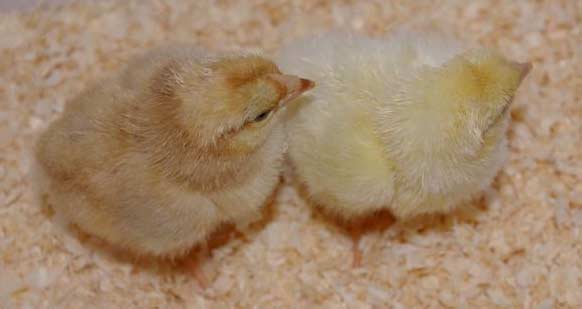
It’s also possible to tell the sex of ‘partridge’ coloured breeds at day old, as the males almost always have a dark stripe running from the corner of the eye, whilst the females usually possess a self-coloured yellowy head.
Recommended reading:
If you like Jeremy's articles, then you might like to know he also has a book called Keeping Chickens: Getting the Best from Your Chickens.
Jeremy offers practical advice on a wide variety of topics from hygiene, disease and healthcare to breeds and breeding, broody hens and incubation.




